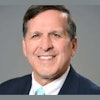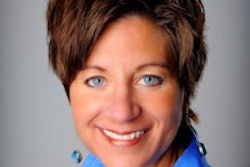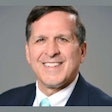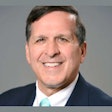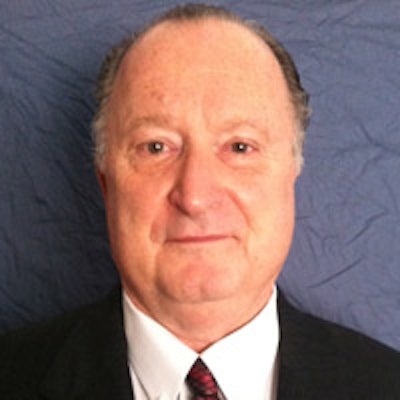
While previous articles have focused on everything from accounting for dentistry through the correct compilation of earnings before interest, taxes, depreciation, and amortization (EBITDA) and net income, and how an internal audit acts as a confirmation of the bona fide record keeping of a dental practice or group, in this series the analysis will turn inward, from overview to examining the innards of a dental practice group -- the profitability of its associate dentists.
This requires a shift in world view, a move from financial accounting to management accounting. While financial accounting is the most prevalent manner for evaluating the profitability of a total practice, management accounting is the nuts and bolts of practice management, which leads to better results on the financial side. No successful financial accounting ever arrives alone; it is worked in conjunction with management accounting and changing the revenue-cost-profitability structure of the dental practice.
This series will focus on how you measure the profitability of your associates.
Associates in a group practice
Let's say you are the owner of a large dental group practice. You have seven dentists working in your group: several associates, paid on collections and a couple of senior dentists paid by the day. Although it is relatively easy to see which dentists are high producers, you want to evaluate which dentists are profitable for your corporation.
 Thomas Climo, PhD, is a dental practice management consultant and a past professor of economics in England.
Thomas Climo, PhD, is a dental practice management consultant and a past professor of economics in England.You start by reviewing the year-to-date or year-end income statement. Since you own three different offices -- one large group and two satellite locations staffed by one dentist each -- the income statement is divided by the three locations before consolidating. This makes it easy to see the performance of the satellites, but your largest practice, like the consolidation itself, has everything grouped together, making it impossible to do the analysis needed for determining the individual dental associate's performance.
As the owner of a group dental practice, you have a variety of responsibilities. Often, owners are also practicing dentists with individual clinical care obligations and serve as the clinical leader of the organization. In addition, as the financial support for the practice(s), the owner is ultimately responsible for the economic success of the group. Associates joining a group practice frequently look to the owner for clinical coaching, "How did you get the patient to accept that $12,000 case?" as well as for feedback on their personal financial performance, so they can begin to understand the business side of dentistry.
 Jill Nesbitt, MBA, is a dental group practice management consultant from Nashville, TN, who also serves as the chief operating officer for a multilocation group.
Jill Nesbitt, MBA, is a dental group practice management consultant from Nashville, TN, who also serves as the chief operating officer for a multilocation group.In working with owners and certified public accountants (CPAs), there is a gap between the financial statements normally provided to business owners to determine profitability versus the level of detail and understanding needed to appropriately divide expenses between practicing dentists in the dental practices themselves. Although it is helpful to see an income statement for the large group practice by location for examining overall profitability, this still doesn't meet the owner's need to evaluate individual dentist performance.
Dentists are increasingly practicing in groups. According to Marko Vujicic, PhD, vice president of the ADA Health Policy Institute, "Our experts say that the group practice model still involves only about 8,000 dentists (4% to 6%) in the United States, so it's still a fairly small share, but it's where the future is going."
In February 2014, the Health Policies Resource Center released a research brief proposing new categories of group practice in an attempt to begin to quantify the growth of each type of group practice. They identified a 9.5% drop in practice ownership by solo dentists from 1991 to 2012, while dental firms with more than 10 locations expanded from 157 offices in 1992 to 3,009 in 2007.
“The owner is ultimately responsible for the economic success of the group. Associates ... frequently look to the owner for clinical coaching ... as well as for feedback on their personal financial performance.”
By all accounts, the dental group practice market is forecast to continue increasing.
The ADA's new classification focuses on types of ownership and does not address the particular type of practice: multiple dentists working in one location versus satellite offices with one dentist in each. Many groups are identifying numerous benefits to placing several dentists in one location. To provide the ultimate in "one-stop shopping" for dental consumers, some practices are establishing general dentists practicing alongside dental specialists. This allows moms to bring their youngest children to the pediatric dentist while their teenager visits the orthodontist. They can also bring their parents to see the periodontist all at the same time! In addition, specialists, often accustomed to practicing solo, are enjoying the camaraderie and clinical coordination afforded by this style of group practice.
In addition, many specialists are beginning to travel, spending one day a week in a general dentist's office more than 40 miles away, as a method to increase their income. A benefit to both parties, the general dentist can now offer a great convenience and level of coordination to his patients, while the specialist enjoys a full schedule and often a "turnkey" operation, where he shows up, does the dentistry, and leaves. This is a dream come true in the aspirations of most dentists. In each of these scenarios, the owner dentist will be responsible for evaluating the profitability of the multiple or single specialist working in his practice, yet no agreed-upon standards for this evaluation exist. It is to establishing this standard that the remaining portions of this series are directed.
The next part of the series will detail how to measure the performance of an associate.
Note: The introduction was written solely by Thomas Climo, PhD. The remainder of the text was written in conjunction with Jill Nesbitt.
Thomas Climo, PhD, is a financial consultant with offices in Las Vegas and Melville, NY. He was a tenured professor of economics at a major university in England and currently handles the dental practice management/dental service organization (DPM/DSO) framework for more than a dozen solo practitioner dentists in 10 states, each with multiple facility practices. He can be reached by phone at 702-578-2757 or by email at [email protected].
Jill Nesbitt, MBA, is a dental group practice management consultant operating from Nashville, TN, who was for more than 15 years a practice administrator for a large single-office dental group in central Ohio and now serves as the chief operating officer for a multilocation group. She can be reached by phone at 615-970-8405 or by email at [email protected].
The comments and observations expressed herein do not necessarily reflect the opinions of DrBicuspid.com, nor should they be construed as an endorsement or admonishment of any particular idea, vendor, or organization.
